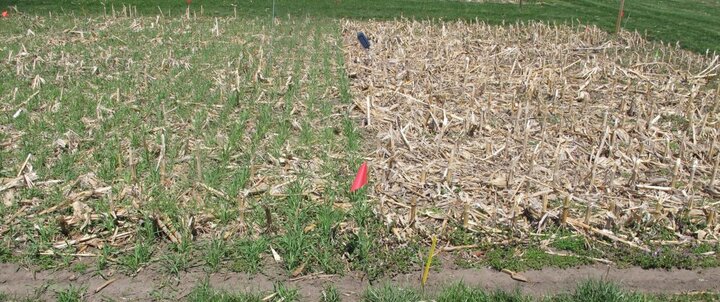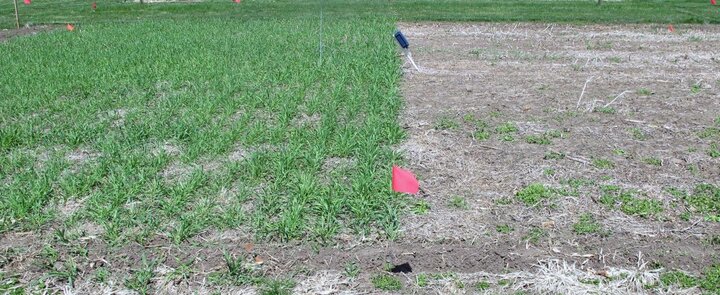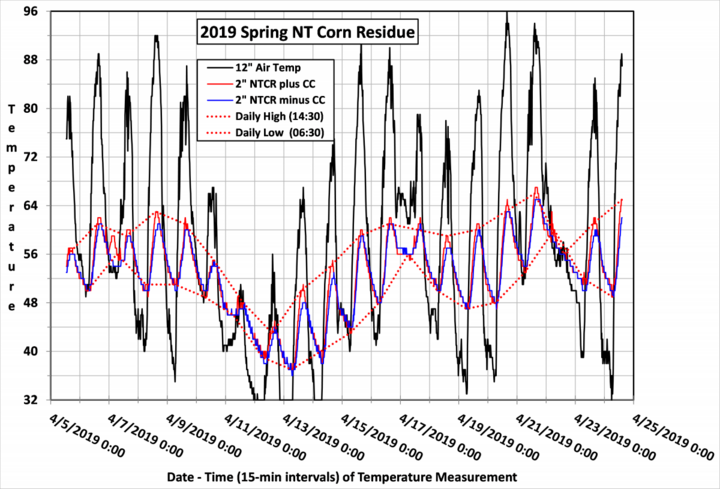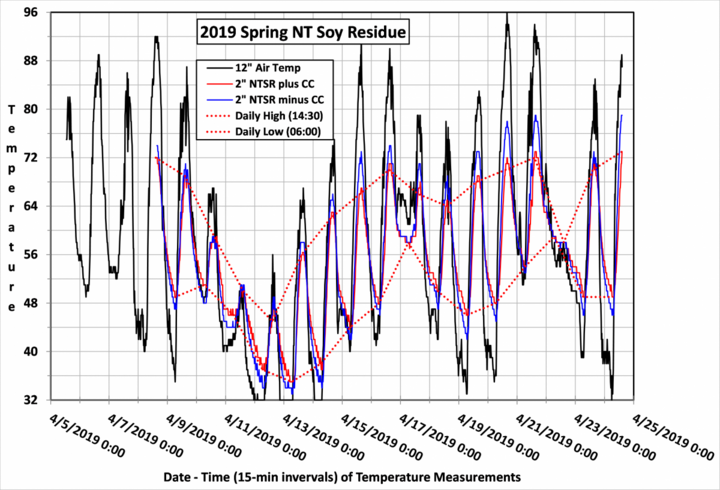More growers are planting soybeans in mid- to late April to take advantage of the greater yield potential from earlier planting. In Nebraska, research has shown that soybean yield declines about 1/4 to 5/8 bushel per acre for each day planting is delayed after May 1. Recent research in Illinois indicates a 0.7 bu/ac decline in yield per day of planting delay.
On this Extension Almanac audio segment, Extension Educator Jenny Rees discusses how planting early can increase your harvest.
Related Planting Stories
- Corn and Soybean Planting Considerations
- Windows of Opportunity for Corn Planting: Nebraska Data
- Windows of Opportunity for Corn Planting: Data from Across the Corn Belt
When planting soybeans in mid- to late April to increase the yield potential, consider these factors:
- Crop insurance is available only for soybean fields planted on or after April 25. If you plant earlier, the potential higher yield reward must be weighed against your need to self-insure against the greater crop loss risk imposed by a possible post-emergence seedling-killing freeze or other damage.
- As one moves soybean planting to an earlier pre-May date, the soil temperatures at a seeding depth of 2 inches will generally be cooler, which will delay the emergence of the soybean seedlings by up to 14 days (compared to seven days or fewer in May plantings). Note that soybean seedlings can only be injured or killed by freezing temperatures after they emerge from the soil.
- Know the long-term probability of freezing air temperatures of 32°F and 28°F for the month of April using weather data available from a nearby NOAA weather station so that you are cognizant of weighing the risk probability of a freeze during the days of April. For those who use the UNL SoyWater program, you can use SoyWater to estimate when seedling emergence can be expected (based on historical weather station records) for several April planting dates you are considering this year.
Although the prior day’s soil temperature and past seven-day average are available from the Nebraska State Climate Office in CropWatch, those are 24-hour averages. You can also take the soil temperature of your field by using a meat thermometer.




At the university’s Eastern Nebraska Research and Extension Center near Mead, soil water temperature sensors were installed 2 inches deep in early April in field plots which had no-till corn or soybean residue cover, both with and without a cereal rye cover crop planted in November 2018. Photos of each field plot are shown in Figure 1. The 2-inch deep soil temperatures in the no-till corn residue plot (with and without the cereal rye cover crop), and in the no-till soybean residue plot (with and without the same cover crop), were recorded at 15 minute-intervals during a 24-hour period, as shown in Figure 2. You can see that high and low soil temperatures are somewhat dependent on the coincident air temperature.
What is notable in the two graphs (Figure 2) is that there are days in April at this ENREC site (sandy loam soil) when 2-inch deep soil temperatures were above 48°F for all 24 hours, and in some cases stayed above 48°F for several consecutive 24-hour days. In the graphs, note that nightly air temperatures on April 12, 13, and 14 plunged to below-freezing levels, which in turn led to declines in soil temperatures to 36-40°F on those days. Soybeans need at least a 24-hour window and preferably 48 hours when the soil temperature at planting depth does not drop much below 50°F or else chilling injury can occur. After 48 hours above 50°F, the developing seedlings are no longer susceptible to chilling injury, and actually can tolerate temperatures as low as 35°F without a problem. The emergence will be slow, but those seedlings do eventually emerge. However, be sure to use a fungicide treatment on any soybean seed planted in mid- to late April as we have no early-planted data where a fungicide seed treatment was not used.
The other notable feature shown in Figure 2 is that the high-low 2-inch soil temperature range (see dotted red lines) is narrower when the soil is covered by no-till corn residue, compared to the wider high-low range when the soil is covered by no-till soybean residue (of which there is little). In the top graph, the daily rise in soil temperature at 2 inches is limited because the thick corn residue on the soil surface prevents the warm solar radiation from directly heating the soil. In the bottom graph, the warm solar radiation reaches the near-bare soil surface (soybean residue is minimal), leading to warmer soil allowing the solar radiation to rapidly warm the 2-inch soil depth.
It is clear that at a soil depth of 2 inches, the diurnal (24-hour) temperature fluctuates over a 10-12 degree F range in a no-till corn-residue-covered soil, but fluctuates by a wider 18-20 degrees F in a no-till soybean-residue-covered soil. The greater warming of soil that occurs in the latter plot provides a greater growing-degree day (if computed on an hourly basis) advantage to the corn crop likely to be planted in this plot this spring.
References
Nafziger, Emerson. Early-Season Soybean Management for 2019. University of Illinois The Bulletin. March 2019
Specht, James, Patricio Grassini, Jenny Rees, Nathan Mueller, and Roger Elmore. Amplifying Positive Impacts of Early Soybean Planting, University of Nebraska Extension CropWatch. April 19, 2018
Specht, Jim, Greg Kruger, Jenny Rees, Roger Elmore, Patricio Grassini, Keith Glewen, and Tom Hoegemeyer. Corn, Soybean Planting Considerations for this Week’s Cold Snap, University of Nebraska Extension CropWatch. April 24, 2017.
Tenorio, Fatima Amor, Patricio Grassini, Jenny Rees, Keith Glewen, Nathan Mueller, Laura Thompson, and Jim Specht. April 2016. Early Bird Gets the Worm: Benefits of Early Soybean Planting, University of Nebraska Extension CropWatch. April 20, 2016

